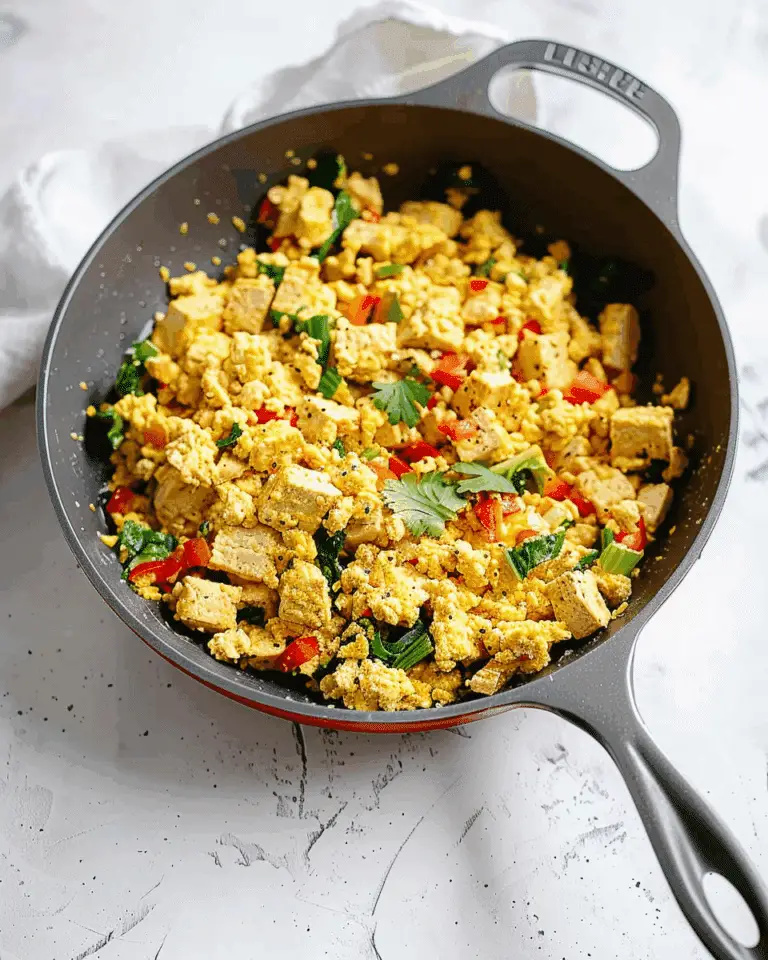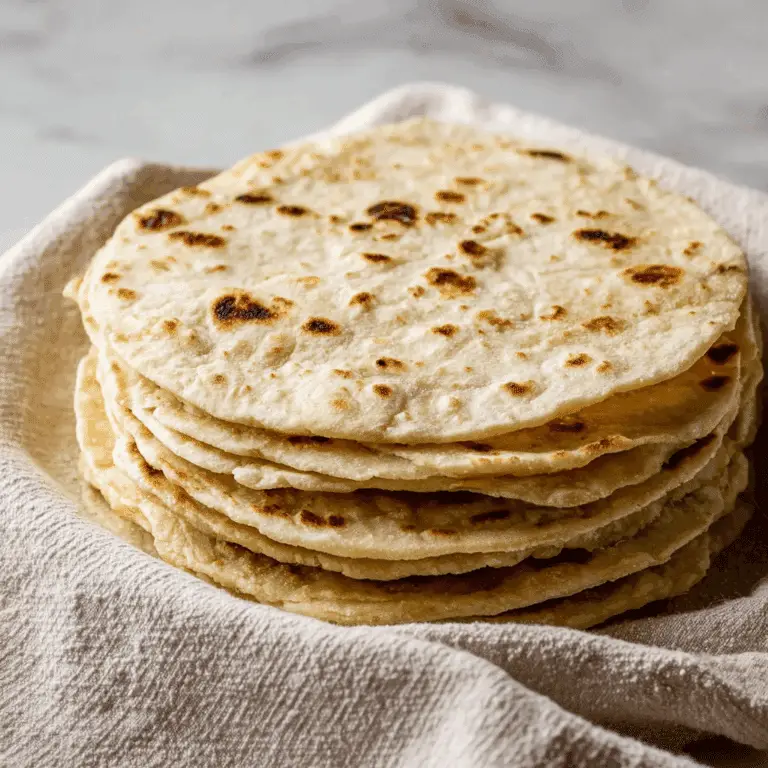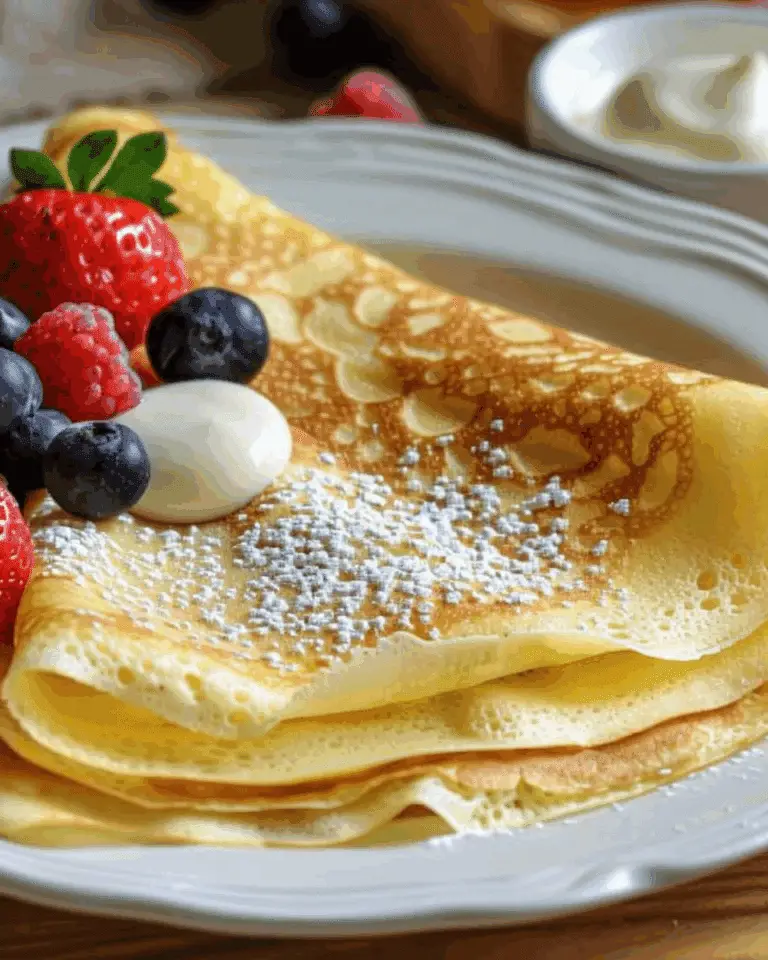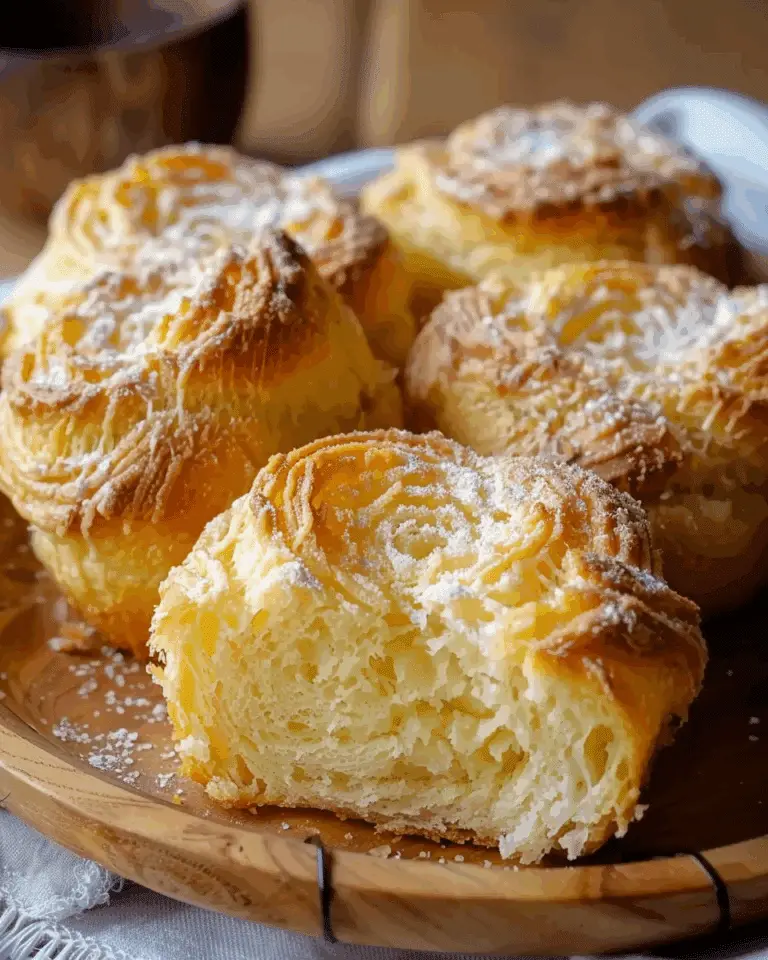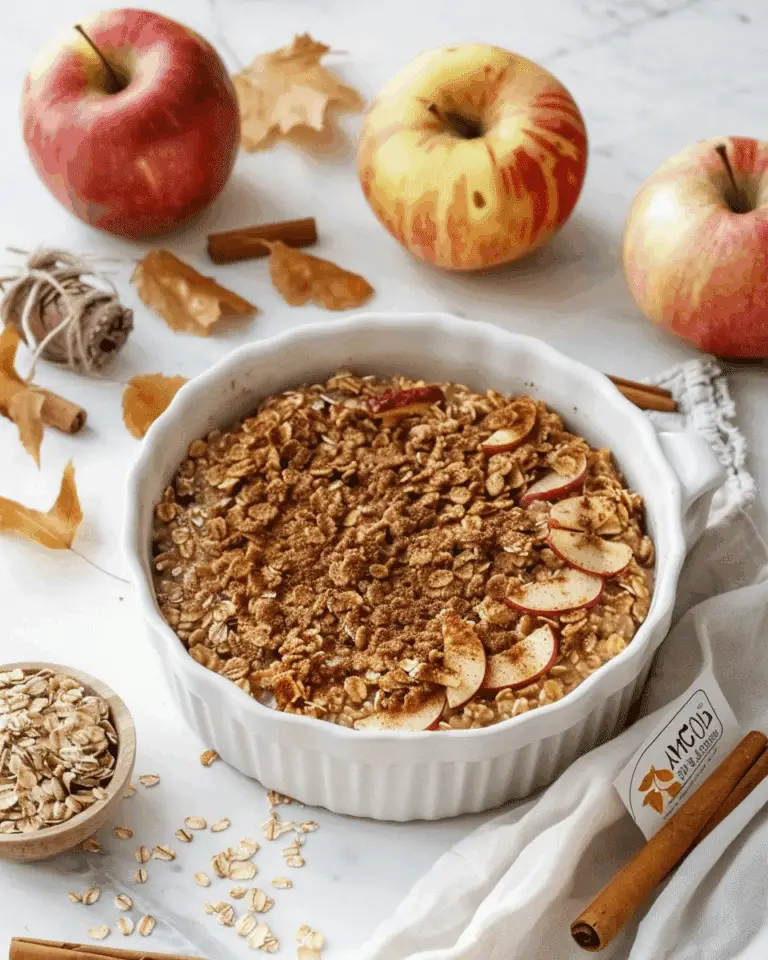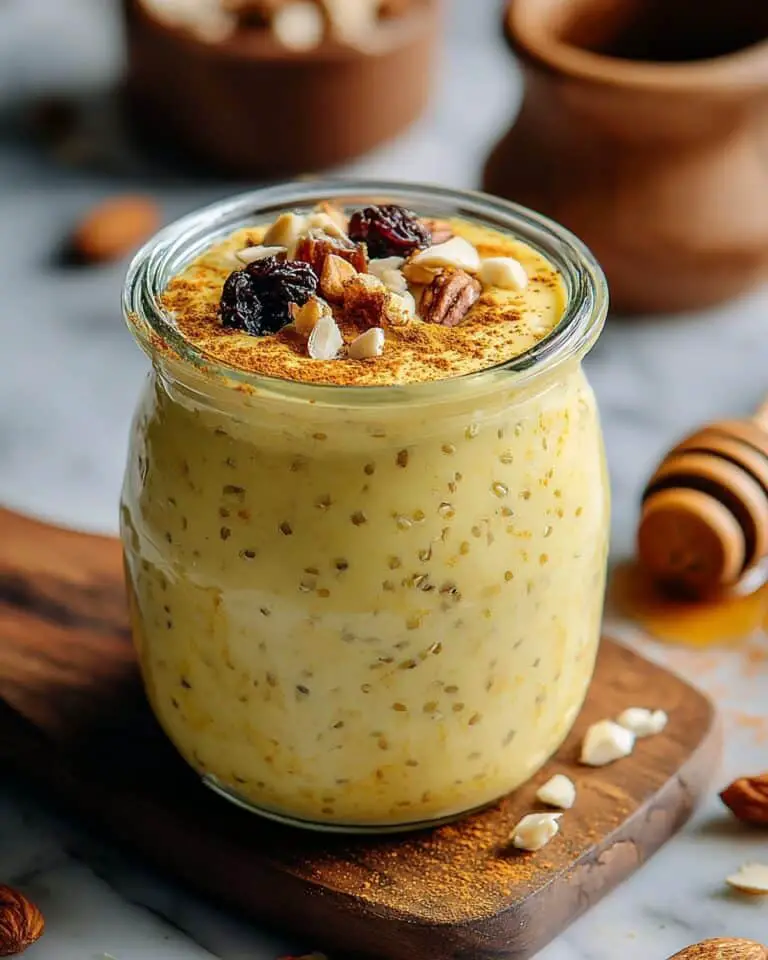Flaky, buttery, and golden, homemade croissants are one of those bakery classics I love bringing into my own kitchen. Making them from scratch takes time and patience, but the reward is layers of crisp pastry that melt in my mouth.

Why You’ll Love This Recipe
I love this recipe because it makes croissants that taste just like they came from a French bakery. The layers of dough and butter puff beautifully in the oven, and the smell while they bake is irresistible. Even though the process takes some planning, I enjoy the ritual of folding, rolling, and shaping the dough.
Ingredients
(Note: All ingredient amounts are listed in the recipe card below.)
1 cup warm water
2 tsp traditional active dry yeast
450 g all purpose flour, *see note
¼ cup sugar, plus a pinch
2 tsp salt
2 tbsp butter, melted
250 g cold unsalted butter, **see note
1 egg
extra flour for rolling
Directions
- I start by dissolving the yeast with warm water and a pinch of sugar, letting it sit until foamy.
- In a large bowl, I mix the flour, sugar, and salt, then stir in the melted butter and yeast mixture until a dough forms.
- I knead the dough lightly, cover it, and let it rise until doubled in size.
- I roll out the dough, then wrap and chill it.
- I shape the cold butter into a flat square and place it in the center of the dough. I fold the dough over the butter and roll it out.
- I perform a series of folds and rolls, chilling the dough in between to create layers.
- Once the laminating process is done, I roll out the dough into a large sheet and cut it into long triangles.
- I roll each triangle tightly into a crescent shape and place them on a baking tray.
- I cover them and let them rise until puffy.
- I brush the croissants with beaten egg and bake until golden brown and crisp.
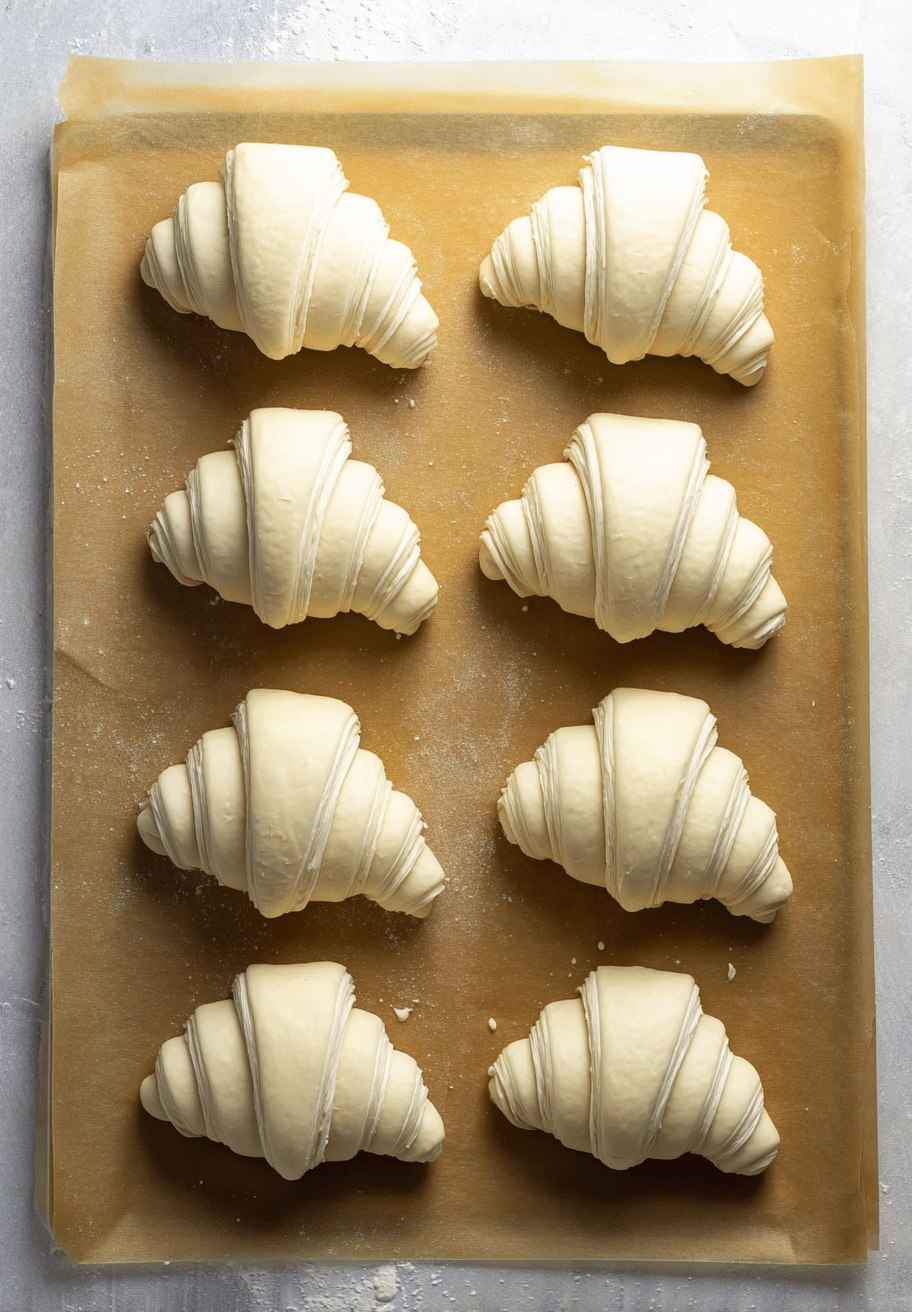
Servings and Timing
This recipe makes about 12 croissants. It usually takes me 30 minutes to prepare, 3 hours of resting and chilling, and about 20 minutes to bake. Altogether, I set aside 4 hours, though much of that is inactive time.
Variations
Sometimes I like to fill my croissants with chocolate, almond paste, and cheese before rolling them up. For a sweeter finish, I dust them with powdered sugar once baked. I also enjoy brushing them with a sugar glaze if I want extra shine and a touch of sweetness.
Storage/Reheating
I keep leftover croissants in an airtight container at room temperature for 2 days or in the fridge for up to 5 days. To reheat, I place them in a 300°F (150°C) oven for about 5 minutes to bring back the crispness. They also freeze well—I just let them cool completely, wrap them tightly, and reheat straight from the freezer.
FAQs
Can I use instant yeast instead of active dry yeast?
Yes, I can use instant yeast, but I skip the proofing step and add it directly to the flour.
How do I make sure the layers stay flaky?
I keep the butter cold and chill the dough often during the folding process.
Can I make the dough ahead of time?
Yes, I often prepare the dough a day before and keep it in the fridge overnight.
What’s the best butter to use?
I use unsalted European-style butter because it has a higher fat content and makes flakier croissants.
Do I have to use a stand mixer?
No, I can mix and knead the dough by hand, though it takes a bit more effort.
How do I know when croissants are done baking?
I bake until they’re deep golden brown, about 18–20 minutes, and the bottoms sound hollow when tapped.
Can I freeze unbaked croissants?
Yes, I freeze them after shaping, then bake them straight from frozen, adding a few extra minutes to the bake time.
Why did my croissants not rise properly?
This usually happens if my yeast wasn’t active, the butter melted into the dough, or the croissants were under-proofed.
Can I make mini croissants with this recipe?
Yes, I simply cut smaller triangles and reduce the baking time slightly.
Do I need to use an egg wash?
I recommend it because it gives the croissants their signature golden shine, but they’ll still taste good without it.
Conclusion
I love making homemade croissants because they transform simple ingredients into something truly special. The process is hands-on but rewarding, and when I bite into those crisp, buttery layers, I always feel it was worth the effort. This recipe is one I return to whenever I want to treat myself or impress guests with something beautiful and delicious.
PrintHomemade Croissants
Flaky, buttery, and golden, these homemade croissants bring the charm of a French bakery into your kitchen. Though time-intensive, the process rewards you with crisp layers and a rich, melt-in-your-mouth texture.
- Prep Time: 30 minutes
- Cook Time: 20 minutes
- Total Time: 4 hours
- Yield: 12 croissants
- Category: Breakfast, Pastry
- Method: Laminating and Baking
- Cuisine: French
- Diet: Vegetarian
Ingredients
1 cup warm water
2 tsp traditional active dry yeast
450 g all-purpose flour
¼ cup sugar, plus a pinch
2 tsp salt
2 tbsp butter, melted
250 g cold unsalted butter
1 egg
Extra flour for rolling
Instructions
- Dissolve the yeast in warm water with a pinch of sugar; let it sit until foamy.
- In a large bowl, mix flour, sugar, and salt. Stir in melted butter and the yeast mixture until a dough forms.
- Knead lightly, cover, and let rise until doubled in size.
- Roll out the dough, wrap, and chill.
- Shape cold butter into a flat square and place it in the center of the dough. Fold the dough over the butter and roll it out.
- Perform folds and rolls, chilling the dough between each turn to create layers.
- Roll the laminated dough into a large sheet and cut into long triangles.
- Roll each triangle into a crescent shape and place on a baking tray.
- Cover and let rise until puffy.
- Brush with beaten egg and bake until golden brown and crisp.
Notes
Use European-style unsalted butter for the best flakiness.
Keep butter and dough cold at all times to preserve layers.
Dough can be prepared a day in advance and chilled overnight.
Unbaked croissants can be frozen and baked straight from frozen with extra time.
Variations include fillings like chocolate, almond paste, or ham and cheese.
Nutrition
- Serving Size: 1 croissant
- Calories: 280
- Sugar: 6g
- Sodium: 210mg
- Fat: 16g
- Saturated Fat: 10g
- Unsaturated Fat: 5g
- Trans Fat: 0g
- Carbohydrates: 28g
- Fiber: 1g
- Protein: 5g
- Cholesterol: 55mg

